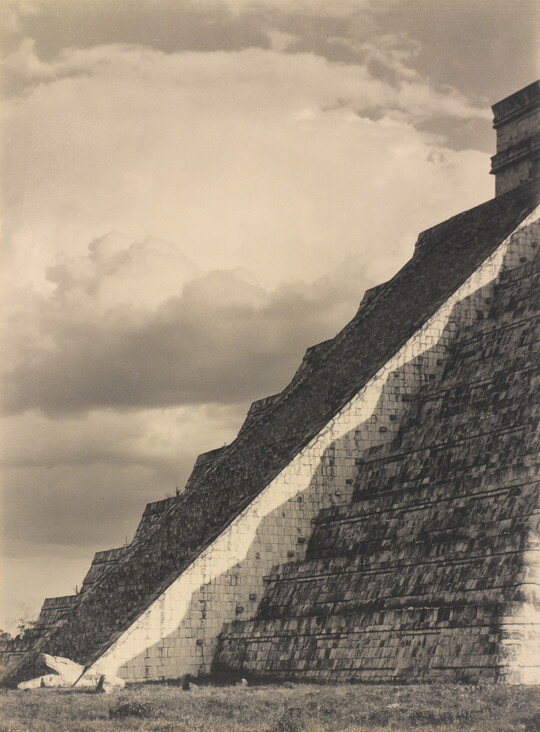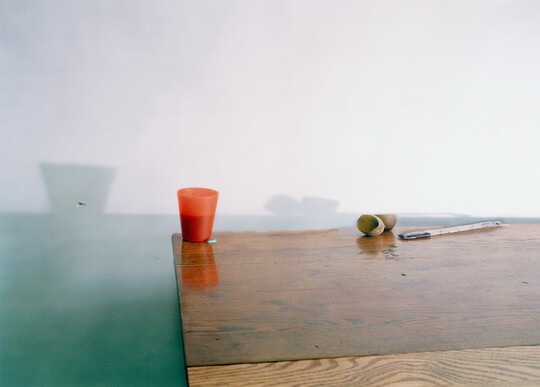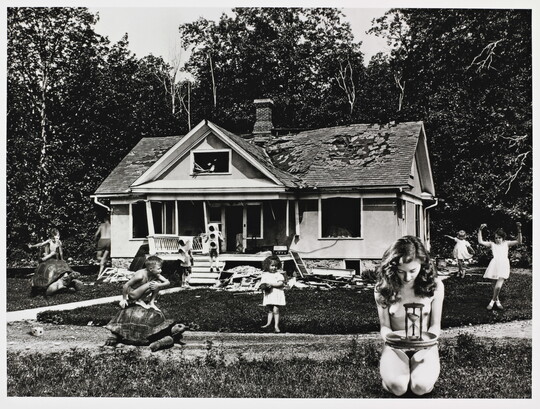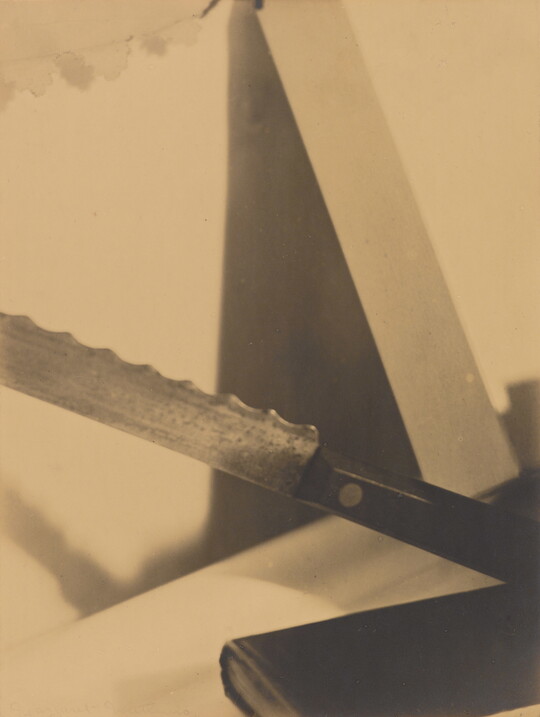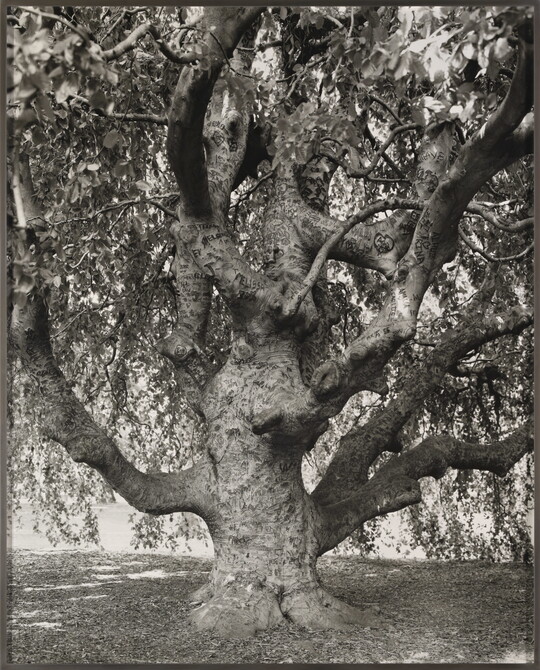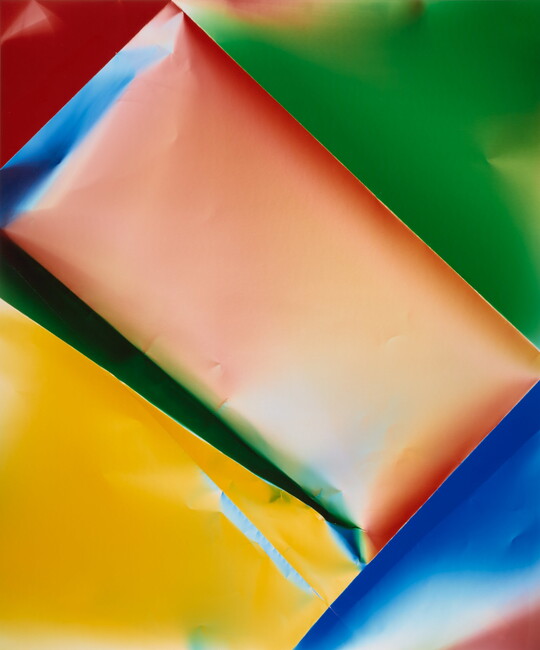


Artwork Images
Photo:
Controls
Martha Graham - Lamentation (Oblique)
Object Details
-
Date
1935, printed 1972
-
Object Type
Photographs
-
Medium
Gelatin silver print
-
Dimensions
Image: 13 3/16 x 10 9/16 in.
Sheet: 13 3/16 x 10 9/16 in.
Mount: 20 x 16 in. -
Inscriptions
Mount, Recto:
l.l. titled in graphite: Martha Graham-LAMENTATION
l.r. signed and dated in graphite: Barbara Morgan-1935
Mount, Verso
c. in ink: Martha Graham-Lamentation-1935 (OBLIQUE) \ Barbara Morgan
c. [rubber stamp]: COPYRIGHT PHOTO \ Not To Be Reproduced \ Without Written Permission \ BARBARA MORGAN \ 120 High Point Road \ Scarsdale, New York 10584 \ WHEN USED IN ANY MEDIA \ CREDIT MUST BE GIVEN: \ PHOTOGRAPH BY BARBARA MORGAN \ NO ARBITRARY CROPPING MAYBE DONE
c. in graphite: 13-1/8 x 10-1/2 ON 20 x 16
c.r. in ink: Archivally Printed-1972/B.B.M.
-
Credit Line
Amon Carter Museum of American Art, Fort Worth, Texas
-
Accession Number
P1974.21.6
-
Copyright
© Barbara and Willard Morgan photographs and papers, Library Special Collections, Charles E. Young Research Library, UCLA
Additional details
Location: Off view
See more by Barbara Morgan
Tags
-
What artistic choices does a photographer make when creating an image?
How might artists portray mood or emotion in their work?
How might the background, clothes, facial expression, and body language depicted in a portrait reveal something about the sitter?
How is light important in the creation of the artwork?
-
Describe what you see.
What is the medium?
What is the figure doing?
Look at the dancer closely. What are her hands doing? Her arms? Her feet? Her legs? Her head? Is her face giving off any emotions? Which ones? What is her body language communicating?
Describe what she is wearing. Does this look like something you might have in your closet? Maybe something you have worn before? Why would someone wear this? How does this outfit complement the figure’s movement?
How does this photograph show movement? Why would it be important to show movement in a photograph of a dancer? Can you imagine how the dancer might have been moving before or after this image was taken?
What mood is depicted in this image? Why do you think that? How does it make you feel?
Does the photograph being in black and white impact how the image makes you feel? What if it had been in color? How might that change the mood? Or the narrative?
Now, look at the title, Lamentation. What does that mean? (The passionate expression of grief or sorrow; weeping.)
Does knowing the title change how you think about the photograph? How so?
Is the figure communicating sorrow to you? If not, what would you rename the photograph?
-
All Levels
Students will write emotions on small pieces of paper (one emotion per piece of paper). Then they will fold the paper and put it in a bag or box to draw from.
Students will each pull an emotion out of the bag. In pairs, students will take turns using their phones or a camera to photograph their partner, who should attempt to demonstrate their drawn emotion through their body language, facial expression, and movement.
The photographer may choose to edit the photograph to best match the emotion being portrayed. Students might consider altering color, tone, brightness, etc. Students will then display their photographs (printed or virtual), and the class will guess which emotion is being portrayed.
Share Educator Resources
Amon Carter Disclaimer
This information is published from the Carter's collection database. Updates and additions based on research and imaging activities are ongoing. The images, titles, and inscriptions are products of their time and are presented here as documentation, not as a reflection of the Carter’s values. If you have corrections or additional information about this object please email us to help us improve our records.
Every effort has been made to accurately determine the rights status of works and their images. Please email us if you have further information on the rights status of a work contrary or in addition to the information in our records.
Related Works
-
Steps of the Castillo, Chichen Itza, 1932
Laura Gilpin
Gelatin silver print
P1964.130
-
A Moslem Woman, Sarajevo, Bosnia, ca. 1925
Clara Sipprell
Gelatin silver print on tissue
P1984.1.68
-
Untitled #52, 2002
Laura Letinsky
Dye coupler print
P2007.3
-
Steamfitter, 1921
Lewis Wickes Hine
Gelatin silver print
P1981.80.3
-
The Time Game, 2011
Jane Hammond
Gelatin silver print
P2011.29
-
Design--Angles, 1919
Margaret Watkins
Gelatin silver print
P1983.41.3
-
Weeping Beech, Brooklyn Botanic Garden, Brooklyn, 2011
Mitch Epstein
Gelatin silver print
P2012.13
-
Drawing No. 18, 1919
Georgia O'Keeffe
Charcoal on paper
1997.2
-
Zerogram, 2017
Ellen Carey
Dye coupler print
P2018.40


